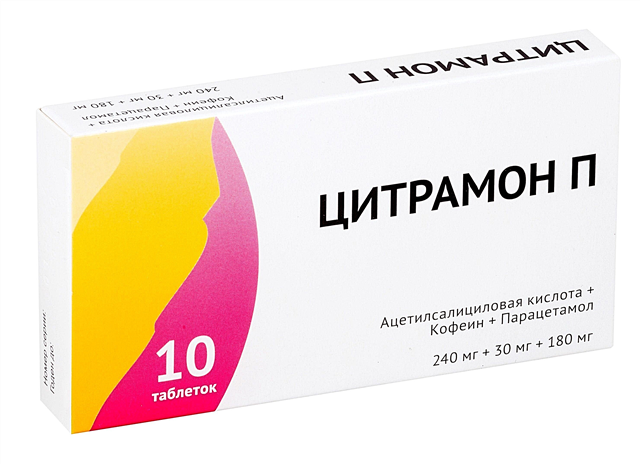
Macrolide antibiotics are in demand due to their broad spectrum of action and rare side effects. Wilprafen is very popular among them. For adults, it is often prescribed for pathologies of the genitourinary organs, peptic ulcer disease and other bacterial infections. But is it possible to give it to a child, what are the age restrictions in the use of Wilprafen and how do parents respond about him?

Release form
The drug is released in the form of tablets that have a shell. They have an oblong convex shape and a white tint, and there are risks on both sides. One pack of Wilprafen includes one blister with 10 tablets.
There is another form of such a medicine, but since it is represented by dissolving tablets, such an antibiotic is called Vilprafen Solutab. It is more convenient to give it to children, because the tablet can be divided into parts, and before taking it is mixed with water, resulting in a strawberry suspension, which is much easier to swallow than solid medicine.

Composition
The main ingredient in Wilprafen, thanks to which the drug has an antimicrobial effect, is josamycin. It is presented in a dose of 500 mg per 1 tablet and is supplemented with substances that help to give the drug shape and strength. Among them are methylcellulose, polysorbate 80, talc, MCC, aluminum hydroxide and other compounds.

Operating principle
After entering the digestive tract, the components of the tablet are absorbed very quickly. The maximum concentration of josamycin in the patient's blood is noted within 1 hour after administration. With the bloodstream, the antibiotic penetrates almost all tissues (except the brain). Especially a lot of medicine gets into the tonsils, saliva, lacrimal fluid and phlegm.
In tissues and organs, the drug acts on infectious agents, inhibiting their reproduction and growth. This action, called bacteriostatic, is due to the ability of josamycin to bind to ribosomes inside microbial cells, which interferes with protein synthesis.
Metabolic changes in the drug occur in the liver, after which most of the antibiotic is excreted in the bile. Only 1/10 of the total amount of the drug leaves the patient's body with urine.

The spectrum of Vilprafen's activity against bacteria is very extensive. The drug effectively fights against different types of streptococci and staphylococci, including such dangerous species for children as pneumococci and Staphylococcus aureus. The drug acts on the causative agent of diphtheria and anthrax, propionobacteria, clostridia, listeria and other gram-positive microorganisms.
The tablets are also active against microbes, which are called gram-negative - gonococci, bordetellas, meningococci, haemophilus influenzae, legionella, Helicobacter and many others. The drug also acts on intracellular microorganisms, including mycoplasmas, chlamydia and ureaplasma.
Resistance to such a drug is very rare. And even if microbes are insensitive to other macrolides, Wilprafen often helps.
Pills are inactive only against enterobacteria, which is considered their advantage over other antibiotics, since the beneficial intestinal flora is not inhibited as a result of treatment.

Indications
Treatment with Wilprafen is recommended for:
- bronchitis;
- laryngitis;
- sore throat;
- otitis media;
- diphtheria;
- pharyngitis;
- pneumonia;
- whooping cough;
- chlamydia lesions (pneumochlamydia, conjunctivitis, and others);
- dental infections;
- dacryocystitis;
- blepharitis;
- anthrax;
- phlegmon;
- wound infection;
- boils;
- erysipelas;
- panaritium;
- infected burns;
- gonorrhea;
- urethritis;
- syphilis;
- scarlet fever;
- sinusitis and many other infections caused by one of the microbes sensitive to josamycin.

From what age is it allowed to take?
According to the annotation, Wilprafen can be prescribed to children weighing more than 10 kilograms. But if we consider that the medicine is available in coated tablets, which are undesirable to break and crumble, the age restrictions in the use of such an antibiotic will be determined by the ability of the little patient to swallow the medicine.
Some children can take this form as early as 3 years old, but often even a 6-7 year old child has difficulty with hard pills. In pediatric practice in under the age of 4-6 years, they often resort to a soluble form (Vilprafen Solutab). Although such tablets contain more active substance (1000 mg per 1 tablet), they can be divided into halves and quarters, and after mixing with water they form a suspension, which can be swallowed by both a child aged 2 years and a one-year-old baby.

Contraindications
Tablets are not prescribed for intolerance to josamycin or any other component. Also, this antibiotic is not prescribed for children with allergies to other macrolides. And due to the fact that the metabolism of the drug occurs mainly in the liver, serious diseases of such an organ are also a contraindication to treatment with Wilprafen.

Side effects
Most often, the child's body tolerates Vilprafen well. If there are side effects, they are often associated with the reaction of the digestive tract and are represented by nausea, discomfort in the stomach, loose stools. Allergies (urticaria, Quincke's edema and other forms), stomatitis, colitis, jaundice, temporary hearing impairment are called rare side effects of tablets.

Instructions for use and dosage
- For children weighing more than 10 kg under the age of 14, Vilprafen is prescribed 1 tablet three times a day. The medicine should be taken at regular intervals (every 8 hours).
- Although the annotation indicates that food intake does not affect the absorption of josamycin, doctors recommend drinking the drug 30 minutes before meals. The medication is swallowed and washed down with water.
- For a child over 14 years old, the drug is prescribed 1-2 tablets twice a day. If required, the daily dosage is increased to 3000 mg and the adolescent is given 2 tablets 3 times a day.
- The duration of treatment with Vilprafen can be from 5 days to 3 weeks. It depends on the severity of the disease and is determined individually. At the same time, it is not worth stopping therapy earlier than the period prescribed by the doctor. Even if the condition of the little patient has improved, the course must be completed in order for the treatment to be completed successfully.
- If pills are missed, you should drink the drug as soon as possible. If the missed pill is remembered by the time of the next drug intake, the “forgotten” pill in addition to the next one is not taken.

In the following short video, Dr. Komarovsky clarifies how to take antibiotics correctly.
Overdose
The manufacturer does not give any information about the negative effect of an exceeded dose of josamycin, but doctors assume that an overdose will manifest itself as an increase in side effects from such a drug. First of all, the symptoms will be associated with irritation of the digestive tract. If they appear, you should immediately consult a doctor.

Interaction with other drugs
Vilprafen is incompatible with many other antibacterial drugs, such as clindamycin and antibacterial drugs. Also, you should not combine this antibiotic with xanthines, digoxin, cyclosporine, ergot alkaloids and antihistamines. Such combinations are fraught with serious adverse reactions.

Terms of sale
The purchase of Vilprafen in a pharmacy is possible only upon presentation of a prescription from a doctor. The average price of one pack of medicine is 530 rubles.
Storage conditions and shelf life
You need to keep the tablets at home in a place hidden from sunlight, where children cannot get the drug. The storage temperature should not be higher than +25 degrees. The shelf life of such an antibiotic is 4 years.

Reviews
In almost all reviews of Wilprafen, parents confirm the high effectiveness of such a drug and very rare side effects. The drug is praised for its wide range of antimicrobial effects, its ability to be used with resistance to many other antibiotics, and its fast action.
At the same time, the disadvantages of the drug are called the large size of the tablets and their high cost. Because of these drawbacks, parents often buy Vilprafen Solutab, because due to the higher dosage, the price turns out to be lower, and the administration of dispersible tablets is more convenient in childhood.

Analogs
Instead of Vilprafen in coated or dissolvable tablets, the doctor may prescribe another macrolide, for example, a suspension of Sumamed or Azitrox based on azithromycin, approved from the age of six months. Macropen granules (prescribed at any age), Klacid suspension (prescribed from 3 years old) or Rulid soluble tablets (used from 2 months) can also become a substitute for josamycin.
If, in the course of treatment, the baby has a Vilprafen intolerance, the doctor will select an antibacterial drug of another group, for example:
- Flemoxin Solutab tablets. Such a penicillin antibiotic is a soluble form - when mixed with water, the tablet forms a fruit syrup. The drug is used for otitis media, furunculosis, gonorrhea, bronchitis and other infections. It is allowed for children of any age.
- Suspension Augmentin, used in children from birth. To expand the spectrum of action, clavulanic acid has been added to the penicillin antibiotic. The medication is in demand for whooping cough, tonsillitis, pneumonia and other diseases.
- Suspension Zinnat, prescribed from 3 months of age. It is an antibiotic of the cephalosporin group, effective for otitis media, pyelonephritis, pyoderma, bronchitis and many other infections.
You will learn more about antibiotics from the program of Dr. Komarovsky.



